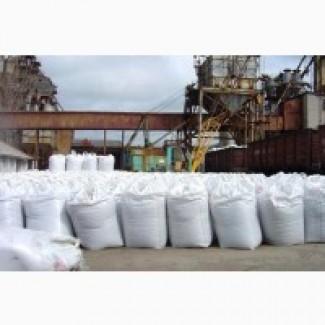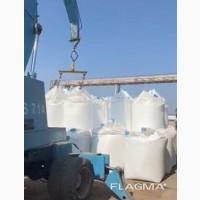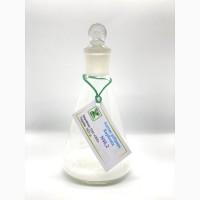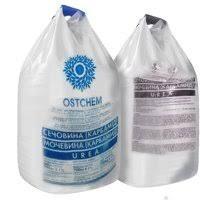/ Fertilizers and plant protection products / Nitrogen fertilizers / I will sell urea from a supplier of at least 1000 tons
Sell / buy
I will sell urea from a supplier of at least 1000 tons, Vinnytsia region.
Region:all of Ukraine,
Vinnytsia region.
(Port)
Updated:
Uzbek urea for sale from the supplier. At least 1,000 tons. The price is negotiated on the day of signing the contract. My phone numbers are +380502711484 Viber and +380969351156 WhatsApp Aleksandr.
Urea (urea) is a fertilizer with an amide form of nitrogen. This is the most concentrated of all nitrogen fertilizers. It is produced in granular form. Granulatedurea possesses different physical characteristics: it does not stick, it retains good seedability. It is used for all agricultural crops in the form of a solution, both for the main application and for non-root fertilization.
Urea is used as a component for the production of complex fertilizers and new types of slow-acting nitrogen fertilizers.
Urea (urea)
Click on photo to enlarge
Show all
Contents:
Physical and chemical properties.
Urea (pure)
Urea (fertilizer)
Application
Agriculture
Industry
Behavior in the soil
Application on various types of soils.
On light sod-podzolic soils.
In rainy conditions
On soils with a neutral and alkaline reaction.
Methods of introduction
Influence on agricultural crops
Phytotoxicity
Winter wheat
Obtaining
Physical and chemical properties.
Urea (in its pure form) is colorless, odorless crystals.
Solubility in water (in 100 g): at +20°C – 51.8 g, at +60°C – 71.7 g, at +120 °C – 95.0 g.
Urea is soluble in methanol, ethanol, isopropanol, isobutanol, ethyl acetate, insoluble in chloroform.
Urea is capable of forming compounds with the inclusion of inorganic substances and with organic substances.
The melting point is +132.7°C.
Density at +25°C – 1330 kg/m3
When heated to 150°C and higher, urea turns into NH4NCO, then NH3 and CO2, biuret, cyanuric acid.
In dilute solutions at 200°C, complete hydrolysis of urea with the formation of NH3 and CO2 is possible.
Urea (fertilizer) - colorless granules from 1 to 4 mm in size. The mass fraction of nitrogen in terms of dry matter is 46.2%.
The mass fraction of biuret should not exceed 1.4%.
The mass fraction of water according to the drying method is no more than 0.3%.
Friability - not less than 100%.
Fertilizers containing Urea
Urea brand B
Prillinated urea, brand B(//tractor-service.com)
Humatized urea
Application
Two brands of carbamide are produced: A – for industry and B – for plant growing.
Agriculture
Urea is used for all agricultural crops as the main fertilizer (for the main application), for early spring fertilizing of winter crops with immediate application to the soil, as well as for fertilizing vegetable and fallow crops with the help of cultivators-plant feeders. Urea is ideal for non-root feeding of plants and fertigation.
Urea brands registered and approved for use in agriculture on the territory of Russia are listed in the table on the right.
Industry
Urea is used in industry as a raw material for the production of resins and glues, as well as in animal husbandry as a feed additive.
Behavior in the soil
Urea in the soil dissolves with a soil solution and under the influence of urobacteria that secrete uraza (a special enzyme), in two or three days it is ammonified and turns into ammonium carbonate:
CO(NH2)2 + 2H2O → (NH4)2CO3
Ammonium carbonate is an unstable compound that decomposes in air, forming ammonium bicarbonate and ammonia:
(NH4)2CO3 → NH4HCO3 + NH3
For this reason, when urea is introduced without sealing into the soil in the absence of sediments, part of the nitrogen in the form of ammonia is lost. Such losses are more significant in soils with a neutral and alkaline reaction.
Ammonium carbonate embedded in the soil undergoes hydrolysis. At the same time, ammonium bicarbonate and ammonium hydroxide are formed:
(NH4)2CO3 + H2O → NH4HCO3 + NH4OH
Ammonium formed when carbamide is introduced into the soil is absorbed by the colloidal fraction and gradually assimilated by plants. It was established that urea can be absorbed by the roots and leaves of plants without preliminary transformation. But there is a danger of leaching urea that has not undergone ammonification from the soil.
During the urea ammonification process, a temporary local alkalinization of the soil occurs due to the hydrolysis of ammonium carbonate. After some time, ammonium undergoes nitrification, forming an acid and moving the reaction towards acidification:
2NH3 + 3O2 → 2HNO2 + 2H2O
2HNO2 + O2 → 2HNO3
Thus, urea is a biologically acidic fertilizer. But after plants absorb nitrogen from this fertilizer, neither acidic nor alkaline residues remain in the soil.
Application on various types of soil.
Urea is used as the main fertilizer on all soils under various agricultural crops.
Urea is more effective than ammonium nitrate on light sod-podzolic soils in the zone of sufficient moisture and during irrigation on serous soils.
In rainy conditions, with the main application of urea, it is equivalent to ammonium nitrate.
On soils with a neutral and alkaline reaction, urea should be immediately incorporated into the soil when applied to reduce nitrogen losses.
Urea is used for sowing and fertilizing.
As the main fertilizer, urea is used on all soils and under all agricultural crops.
Early spring fertilizing of winter crops is carried out with immediate application of fertilizer to the soil by harrowing in order to reduce ammonia losses.
Fertilization of vegetable and fallow crops is carried out using cultivators-plant feeders.
Urea is considered the best form of nitrogen fertilizer for non-root fertilizing plants, as it does not burn the leaves and is able to be absorbed by them in the form of a whole molecule, without decomposition.
Already 48 hours after spraying withcarbamide nitrogen is found in the protein composition of plants.
Urea is one of the fertilizers recommended for fertigation.
Influence on agricultural crops
Urea is a valuable nitrogen fertilizer. It is effective when applied to various cultures. According to its effect on the crop, it is in the same row withammonium nitrate.
Phytotoxicity. Applying urea to beets (all types) and rape before sowing can lead to the death of seedlings.
Winter wheat. The use of urea as a non-root fertilizer significantly increases the protein content in grain.
Receiving
Urea is obtained by synthesis from ammonia and carbon dioxide (CO2) at high pressure and temperature. To improve physical and chemical properties, crystalline urea is granulated. Granules to reduce stickiness are covered with a thin film of fat additives.
Urea (urea) is a fertilizer with an amide form of nitrogen. This is the most concentrated of all nitrogen fertilizers. It is produced in granular form. Granulatedurea possesses different physical characteristics: it does not stick, it retains good seedability. It is used for all agricultural crops in the form of a solution, both for the main application and for non-root fertilization.
Urea is used as a component for the production of complex fertilizers and new types of slow-acting nitrogen fertilizers.
Urea (urea)
Click on photo to enlarge
Show all
Contents:
Physical and chemical properties.
Urea (pure)
Urea (fertilizer)
Application
Agriculture
Industry
Behavior in the soil
Application on various types of soils.
On light sod-podzolic soils.
In rainy conditions
On soils with a neutral and alkaline reaction.
Methods of introduction
Influence on agricultural crops
Phytotoxicity
Winter wheat
Obtaining
Physical and chemical properties.
Urea (in its pure form) is colorless, odorless crystals.
Solubility in water (in 100 g): at +20°C – 51.8 g, at +60°C – 71.7 g, at +120 °C – 95.0 g.
Urea is soluble in methanol, ethanol, isopropanol, isobutanol, ethyl acetate, insoluble in chloroform.
Urea is capable of forming compounds with the inclusion of inorganic substances and with organic substances.
The melting point is +132.7°C.
Density at +25°C – 1330 kg/m3
When heated to 150°C and higher, urea turns into NH4NCO, then NH3 and CO2, biuret, cyanuric acid.
In dilute solutions at 200°C, complete hydrolysis of urea with the formation of NH3 and CO2 is possible.
Urea (fertilizer) - colorless granules from 1 to 4 mm in size. The mass fraction of nitrogen in terms of dry matter is 46.2%.
The mass fraction of biuret should not exceed 1.4%.
The mass fraction of water according to the drying method is no more than 0.3%.
Friability - not less than 100%.
Fertilizers containing Urea
Urea brand B
Prillinated urea, brand B(//tractor-service.com)
Humatized urea
Application
Two brands of carbamide are produced: A – for industry and B – for plant growing.
Agriculture
Urea is used for all agricultural crops as the main fertilizer (for the main application), for early spring fertilizing of winter crops with immediate application to the soil, as well as for fertilizing vegetable and fallow crops with the help of cultivators-plant feeders. Urea is ideal for non-root feeding of plants and fertigation.
Urea brands registered and approved for use in agriculture on the territory of Russia are listed in the table on the right.
Industry
Urea is used in industry as a raw material for the production of resins and glues, as well as in animal husbandry as a feed additive.
Behavior in the soil
Urea in the soil dissolves with a soil solution and under the influence of urobacteria that secrete uraza (a special enzyme), in two or three days it is ammonified and turns into ammonium carbonate:
CO(NH2)2 + 2H2O → (NH4)2CO3
Ammonium carbonate is an unstable compound that decomposes in air, forming ammonium bicarbonate and ammonia:
(NH4)2CO3 → NH4HCO3 + NH3
For this reason, when urea is introduced without sealing into the soil in the absence of sediments, part of the nitrogen in the form of ammonia is lost. Such losses are more significant in soils with a neutral and alkaline reaction.
Ammonium carbonate embedded in the soil undergoes hydrolysis. At the same time, ammonium bicarbonate and ammonium hydroxide are formed:
(NH4)2CO3 + H2O → NH4HCO3 + NH4OH
Ammonium formed when carbamide is introduced into the soil is absorbed by the colloidal fraction and gradually assimilated by plants. It was established that urea can be absorbed by the roots and leaves of plants without preliminary transformation. But there is a danger of leaching urea that has not undergone ammonification from the soil.
During the urea ammonification process, a temporary local alkalinization of the soil occurs due to the hydrolysis of ammonium carbonate. After some time, ammonium undergoes nitrification, forming an acid and moving the reaction towards acidification:
2NH3 + 3O2 → 2HNO2 + 2H2O
2HNO2 + O2 → 2HNO3
Thus, urea is a biologically acidic fertilizer. But after plants absorb nitrogen from this fertilizer, neither acidic nor alkaline residues remain in the soil.
Application on various types of soil.
Urea is used as the main fertilizer on all soils under various agricultural crops.
Urea is more effective than ammonium nitrate on light sod-podzolic soils in the zone of sufficient moisture and during irrigation on serous soils.
In rainy conditions, with the main application of urea, it is equivalent to ammonium nitrate.
On soils with a neutral and alkaline reaction, urea should be immediately incorporated into the soil when applied to reduce nitrogen losses.
Urea is used for sowing and fertilizing.
As the main fertilizer, urea is used on all soils and under all agricultural crops.
Early spring fertilizing of winter crops is carried out with immediate application of fertilizer to the soil by harrowing in order to reduce ammonia losses.
Fertilization of vegetable and fallow crops is carried out using cultivators-plant feeders.
Urea is considered the best form of nitrogen fertilizer for non-root fertilizing plants, as it does not burn the leaves and is able to be absorbed by them in the form of a whole molecule, without decomposition.
Already 48 hours after spraying withcarbamide nitrogen is found in the protein composition of plants.
Urea is one of the fertilizers recommended for fertigation.
Influence on agricultural crops
Urea is a valuable nitrogen fertilizer. It is effective when applied to various cultures. According to its effect on the crop, it is in the same row withammonium nitrate.
Phytotoxicity. Applying urea to beets (all types) and rape before sowing can lead to the death of seedlings.
Winter wheat. The use of urea as a non-root fertilizer significantly increases the protein content in grain.
Receiving
Urea is obtained by synthesis from ammonia and carbon dioxide (CO2) at high pressure and temperature. To improve physical and chemical properties, crystalline urea is granulated. Granules to reduce stickiness are covered with a thin film of fat additives.
|
Shop, contacts | |
Alexander / reviews, info.: 24 / rating activities Attention! The user has manynegative reviews | |
|
Phone:
+380xxxxxx
show
| |
| Skype: potapsan | |
All user ads ~307 | |
Ad ID: #1112711
(added by a registered user, registration date: 2012-08-14)
Added / Updated: 10-15-2025 20:29 (current, until: 15-11-2025)
Permanent Ad Address:
Impressions / views for today: ?, total: ?
Similar ads
There are many interesting ones among them...






